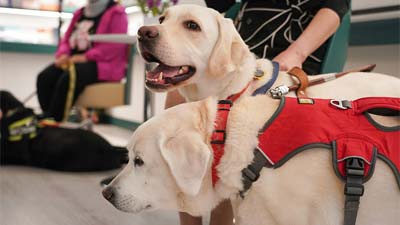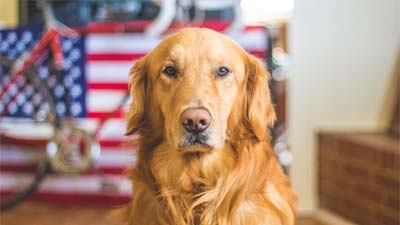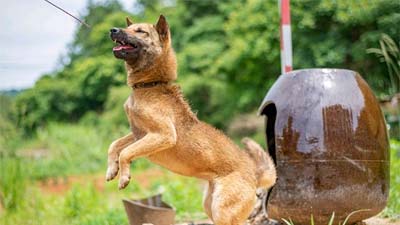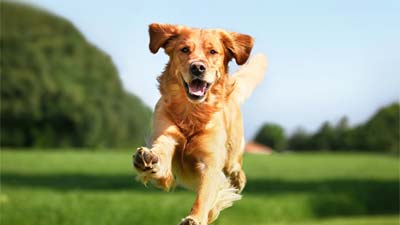- Size
- Smallest
- Small
- Small to Medium
- Medium
- Large
- Giant
- Characteristics
- Smartest
- Hypoallergenic
- Fluffy
- Best Guard
- Best Family
- Best for Kids
- Low Shedding
- Healthiest
- Police Dogs
- Most Calm
- Quietest
- Color
- White
- Black
- Grey
- Brown
- Blue
- Red
- Coat
- Hairless
- Short
- Long
- Origin
- Japan
- China
- Australia
- Germany
- Italy
- United States
- France
- Group
- Hound
- Terrier
- Herding
- Toy
- Working
- Sporting
Deciphering Dog Sleeping Positions: The Side Sleeper Pose

Photo by Irina on Unsplash
Dogs are remarkable creatures known for their expressive behaviors, and the way they sleep is no exception. From curled-up balls to sprawled-out positions, each sleeping posture unveils a tale of comfort, safety, and their unique personalities. Among these, the side sleeper pose emerges as one of the most prevalent and telling positions, offering insights into a dog’s emotional state and sense of security.
So, let's embark on a journey to unveil the mystery behind The Side Sleeper Pose and discover what it tells us about our beloved canine companions.
The Side Sleeper Pose: An Overview
The side sleeper pose is a common sleeping position among dogs. In this stance, dogs lie on their side with their legs extended, showcasing a relaxed and vulnerable posture. This position leaves their limbs free to move, often leading to twitching and leg kicks during sleep, a sign of the dog experiencing dreams or rapid eye movement (REM) sleep.
Unveiling the Meaning
Safety and Relaxation: One of the most profound interpretations of a dog sleeping on its side is the sense of safety and relaxation it conveys. Dogs opting for this pose display a level of comfort and ease in their environment. Their muscles can fully relax, indicating a sense of security.
Exposed Belly: Trust and Vulnerability: The most significant aspect of the side sleeper pose is the exposed belly. Dogs, being instinctively protective of their vital organs, consider exposing their belly a vulnerable position. When a dog willingly displays its stomach while sleeping, it signifies an immense level of trust and comfort in their surroundings and a deep bond with their owners.
Dreaming and Leg Movements: Dogs in the side sleeper pose often exhibit leg movements, twitching, or kicks during sleep. This behavior aligns with REM sleep, suggesting that the dog is experiencing dreams. These movements might be responses to the dream content, adding to the overall portrayal of relaxation and subconscious activity.
The Side Sleeper Pose: Benefits for Dogs
For dogs, the side sleeper pose isn't merely a favored sleeping position—it's a posture that often correlates with physical well-being and comfort. This stance offers numerous benefits that contribute to their overall health and alleviate various physical pressures.
Optimal Breathing and Muscular Relief:
Dogs that adopt the side sleeper pose often do so because it promotes optimal breathing and muscular relaxation. By lying on their side, they open up their airways, allowing for easier and more relaxed breathing during sleep. This position also alleviates pressure on their chest, facilitating better lung expansion and, subsequently, improved oxygen intake.
Alleviating Joint and Muscle Strain:
The side sleeper pose can be particularly beneficial for dogs dealing with underlying health issues or prone to joint and muscular discomfort. When dogs sleep on their side, it reduces stress on their joints and muscles. This posture minimizes pressure points, redistributing their weight more evenly and easing strain on sensitive areas.
Support for Health Conditions:
For dogs suffering from conditions like arthritis, hip dysplasia, or any joint-related ailment, the side sleeper pose might offer considerable relief. It helps maintain a neutral spine position, reducing strain on the spine and providing comfort to achy joints. Additionally, this pose avoids placing weight on specific areas, preventing exacerbation of pain in afflicted regions.
Natural Preference for Comfort:
Dogs that instinctively opt for the side sleeper pose often do so out of their innate need for comfort. This position allows them to rest in a manner that feels naturally soothing and helps them attain a more restful sleep, contributing to their overall well-being.
Observations and Variations
While the side sleeper pose generally signifies comfort and safety, understanding individual variations and external influences is crucial:
Breed and Size: Different breeds and sizes of dogs might exhibit varying preferences in their sleeping positions. Larger breeds might sprawl out more, while smaller breeds might opt for more compact positions for warmth.
Temperature and Environment: External factors like room temperature, the softness of the sleeping surface, or changes in the environment can impact a dog’s choice of sleeping position.
Health and Age: Older dogs or those with specific health conditions might prefer positions that alleviate discomfort or joint pain, influencing their sleeping posture.
Conclusion
Dog sleeping positions are much more than just random poses during rest. They offer us valuable insights into our canine companions' physical well-being, emotional state, and the bond they share with us.
The Side Sleeper Pose represents relaxation, trust, and a desire for social connection. It symbolizes a dog's ability to enter a deep sleep, feeling secure and comfortable in their environment. By understanding these postures, we can better appreciate our furry friends' needs, provide them with a safe and comfortable sleeping space, and nurture the emotional connection we share with them.
So, the next time you catch your dog snoozing on their side, take a moment to acknowledge their deep relaxation, trust, and longing for companionship, and cherish the special bond you have with your four-legged friend.
You May Also Like
 Dog BreedsBreed Guide: Choosing the Best Service Dog Breeds
Dog BreedsBreed Guide: Choosing the Best Service Dog Breeds Facts About Dogs10 Fascinating, Little-Known Dog Facts
Facts About Dogs10 Fascinating, Little-Known Dog Facts Dog HealthWhat Causes Vestibular Disorders in Dogs?
Dog HealthWhat Causes Vestibular Disorders in Dogs? Dog BehaviorCultivating Control: Redirecting Your Dog's Jumping Behavior
Dog BehaviorCultivating Control: Redirecting Your Dog's Jumping Behavior Dog BehaviorDog's Chasing Instinct: Safeguarding and Training for Safety
Dog BehaviorDog's Chasing Instinct: Safeguarding and Training for Safety Breed ReviewsThe 10 Dog Breeds That Don't Shed
Breed ReviewsThe 10 Dog Breeds That Don't Shed